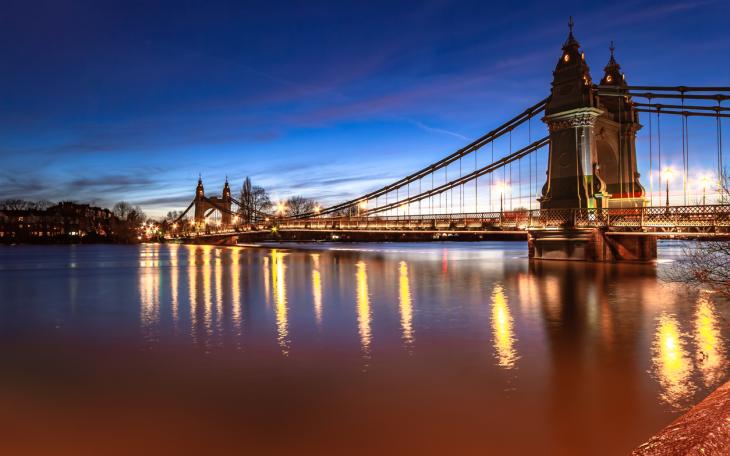A Bridge Too Far

London is blessed with 35 bridges that serve as vital links connecting the bustling north and south sides of the River Thames. Beyond their crucial role in city connectivity, many of these bridges stand as prominent attractions, each possessing its own unique charm and historical significance.
My local, Hammersmith Bridge, a Grade II listed structure built in 1887 made of wood and wrought iron connecting Barnes to the south and Hammersmith to the north is one of the world's oldest suspension bridges. However, it was fully closed in 2020 due to safety concerns from micro-fractures in its 136-year-old structure. Its last closure occurred in 1997, lasting for three years, and was followed by a suspected IRA bomb blast in 2000.
Restoration progress on the bridge has been slow. After a partial reopening in 2021 to pedestrians and cyclists, Hammersmith and Fulham Council (H&F), who own and are responsible for the bridge, announced this week the introduction of temporary cycle lanes for cyclists, cargo bikes, and e-scooters. This implementation was delayed due to damage caused to the gantry by a boat carrying West Ham fans to Craven Cottage in December.
Nonetheless, the reopening for cars appears to be a distant and unattainable prospect. Since 2019, H&F has invested £29 million in stabilising the bridge. However, the Government task force responsible for its full repair has not convened for the past two years.
Due to the war in Ukraine and inflationary factors, repair expenses have reportedly escalated to approximately £250 million during this time. The Department for Transport (DfT) appears reluctant to cover the entire cost, instructing both H&F and Transport for London (TFL) to bear an unprecedented 33% share of the estimated £250m repair bill.
TFL has historically stepped in to repair bridges across London, paying 85% of the repair works on bridges owned by borough councils. However, their hesitancy to front the large cost was highlighted when they released a new business plan outlining spending for 2026-27, with no money being set aside for Hammersmith Bridge.
TFL has disclosed fortnightly meetings with H&F and the Government regarding bridge repair expenses. Surprisingly, when Richmond Park MP Sarah Olney questioned in Parliament the lack of formal documentation or minuting of these meetings, it raised concerns of a cover-up, as expressed by Mrs Olney in a recent LBC interview.
H&F is considering a plan to construct a temporary deck above the existing one for pedestrians, cyclists, and vehicles during main deck repairs, but again, funding approval and planning consent depends on the Government accepting their business case, delaying H&F's decision to move forward.
Being one of Britain's most expensive and complex bridges to repair, it seems like Hammersmith Bridge has been dropped to the back of the DfT funding queue. Whilst a reopening to cyclists is welcome - residents, schoolchildren, commuters, bus companies, together with councillors and MPs on both sides of the river are urging the Government to step in and get the bridge fixed as it is an important cog in West London's transport infrastructure, with its closure putting an undue strain on the adjacent bridges.








